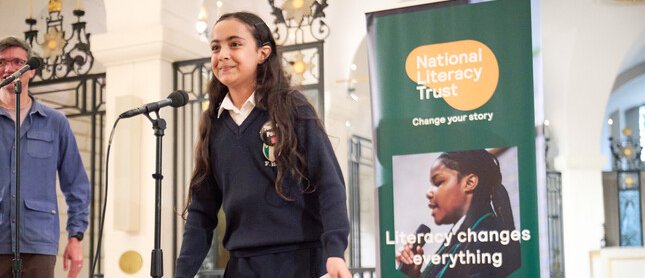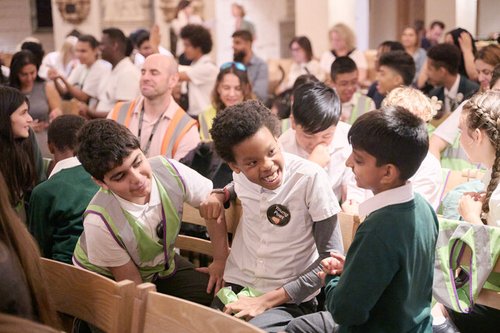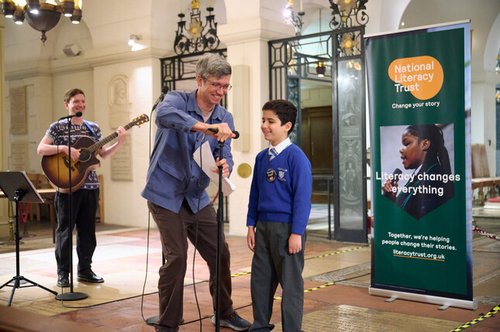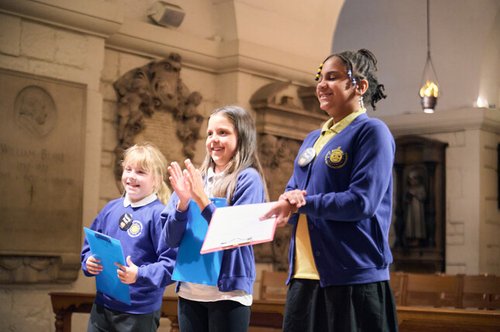Young City Poets

A visit to an iconic London venue will inspire Young City Poets pupils to write poetry of their own.
"My confidence grew higher after that trip because I usually don't speak that much in school"
Pupil
Get involved
Young City Poets is aimed at reluctant writers in Years 5 to 9 from London state schools with over 24.6% of pupils eligible for free school meals.
If you have any questions please email youngcitypoets@literacytrust.org.uk

About the programme
Young City Poets is a writing for enjoyment project that enables pupils to engage with literacy on their own terms in a way that also meets national curriculum requirements for writing.
Every school participating in Young City Poets will receive a teaching briefing as well as ongoing support to use our three-pillar approach to writing to galvanise pupils’ engagement with poetry.
-
Memorable experience
A visit to a cultural venue in London will provide the spark for students' creative imagination.
-
Working with a professional Poet
Pupils will engage in lively guided discussions, collaborative and individual writing activities led by a practising poet.
-
Real audience and purpose
Opportunities to perform their poetry in front of a live audience, and to be published in an anthology provide students with real purpose for creative work.
We ask that...
- You deliver two lessons with your class (lesson plans are provided)
- You nominate and ensure the inclusion of your students in the performance and publishing opportunities
- You and your students complete the post-project evaluation surveys
The programme in action


"The children who came to the performance usually struggle with their writing confidence and this has given them so much happiness and confidence. It supported children to understand that writing can be about anything, including the world around them.”
Teacher
"Taking part was helpful to me as at the time I was having troubles in my life and the trip and the visit from the poet opened me to expressing my feelings through writing.""
Pupil
Why Poetry?
Young poetry lovers see poetry as a readily available and energetic tool to support mental wellbeing, express feelings and struggles, escape reality or make sense of complex events going on in our world.
Over many years, the National Literacy Trust has been running and developing poetry programmes that supports children and young people to enjoy their writing. With Young Poets, teaching poetry is not so much about learning how to be good at poetry but about exploring how poems work and about playing with language, rhythm, volume and movement to discover each pupil’s individual poetic style. Young Poets’ process of memorable experiences to help bring writing to life, lively guided discussions, collaborative and individual writing activities led by professional poets, and publishing and performing tasks, enable pupils to engage with literacy on their own terms in a way that also meets national curriculum requirements for writing.
Every school participating in Young Poets is provided with support to use our three-pillar approach to writing to galvanise students’ engagement with poetry.


